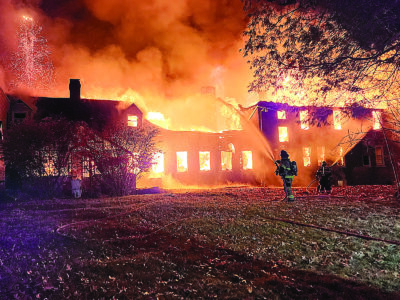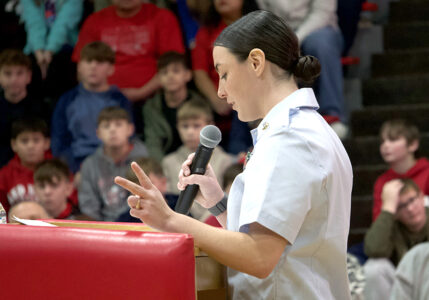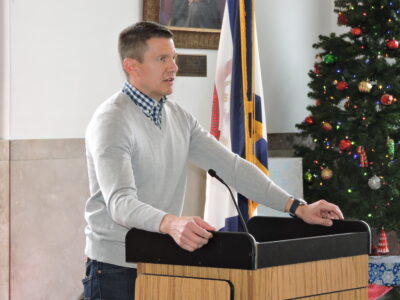Fall Public School Enrollment Numbers Continue Steady Decline
CHARLESTON — Fall enrollment numbers for West Virginia’s 55 county public school systems continued a downward trend, adding to fears of future school consolidations and closings.
The West Virginia Board of Education met Wednesday morning for its monthly meeting at the state Department of Education headquarters on the grounds of the State Capitol Complex in Charleston.
Board members received the annual West Virginia Education Snapshot, showing the number of public school students, professional staff, total public schools, and number of non-public school students in the state.
According to the report, there were 234,957 students enrolled in the state’s 55-county school system. That includes the 4,234 students enrolled in the state’s five in-person public charter schools and two statewide virtual charter schools, and the 42 students enrolled at the West Virginia Schools for the Deaf and the Blind in Romney.
The 234,957 total fall enrollment number is a 2.52% decrease from fall enrollment this time last school year of 241,024 and a 15.32% decrease from the 277,452 fall enrollment number in 2015 a decade ago.
“We’ve heard a lot about there’s declining enrollment in our state as a whole, and that’s also affecting our school systems,” State Superintendent of Schools Michele Blatt said. “But we also thought it was important to note the enrollment that we have in our districts and the change from last year to this year. And 53 of our 55 districts did decrease in enrollment this past year.”
According to Blatt, out of 55 counties, only Tyler and Doddridge counties saw increases in enrollment from last school year to this school year. Tyler County’s enrollment increased from 1,184 students for the 2024-25 school year, to 1,224 students as of October for a 3.38% increase. Doddridge County’s enrollment increased from 1,203 students last school year to 1,220 students for a 1.41% increase.
The number of public schools in the state decreased from 637 schools last year to 618 schools as of October for a 2.98% decrease. Last year, eight counties approved school closures and consolidations. This year, four county boards of education – Roane, Logan, Randolph, and Barbour counties – approved nine closures of schools to date. Upshur County is considering the closure and consolidation of two elementary schools this year, while Wetzel County is considering the consolidation of two high schools.
School closure and consolidation decisions are made at the local level by county boards of education, explained Micah Whitlow, director of school facilities for the state Department of Education.
“Just running through what the county board has to do, they’re the local decision-making body that compiles the plans,” Whitlow said. “I’ve watched a lot of these that have happened, counties are making these decisions based on real problems. These things aren’t done on a whim or just woke up one day thinking about this.
“There’s been a lot of thought process into the reasons,” Whitlow continued. “Some of them are staff shortages, finances issues. deteriorating facilities, or some of them, all of those together. So, they’re making these decisions on real problems.”
Whitlow said the state Board of Education has the final say over county school closure/consolidation plans only as far as making sure the county boards followed State Code and existing Department of Education policies.
“Obviously the counties are preparing the plans and kind of doing the bulk of the work and coming up with an idea and then brought before the state board for consideration to make sure it meets the law and is a good plan and good for students,” Whitlow said.
County school systems rely on property taxes, bonds and levies, and funding through the complicated state school aid formula which is primarily based on student enrollment. The Department of Education finalizes student enrollment numbers every October, which then determines how much money county school systems get from the school aid formula the next school year.
According to the report, 98.2% of public school students are enrolled in a traditional public school, with 1.8% enrolled in either an in-person public charter school or the two statewide virtual public charter schools. Most charter school students are enrolled in the two statewide virtual charter schools.
According to the 2025-25 Education Snapshot, there were 33,747 non-public school students in West Virginia as of October, with 14,126 enrolled in private schools and 19,621 students being homeschooled. Of those numbers, approximately 15,000 were approved for 100% funding through the Hope Scholarship program for the current school year.
Only students leaving the public school system are eligible for the Hope Scholarship this fiscal year, which provides those students up to $5,267.38 – the equivalent of the per-pupil expenditure made available to counties through the state school said formula. Blatt said some Hope Scholarship recipients still use public school resources.
“Looking at the number of Hope Scholarship students that we serve in the public schools…you know those students can apply and pay tuition to come into the school,” Blatt said. “So, 477 of our Hope Scholarship students still continue to come back into the public school to take certain classes.”



